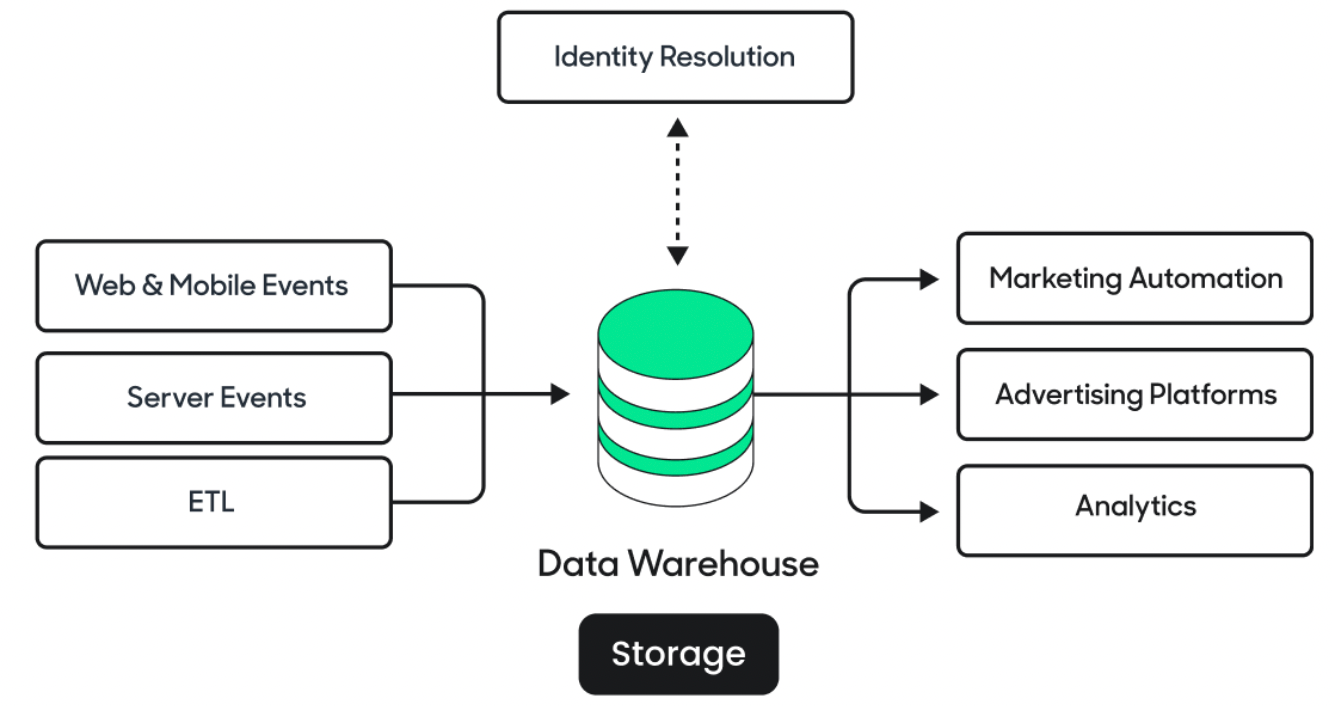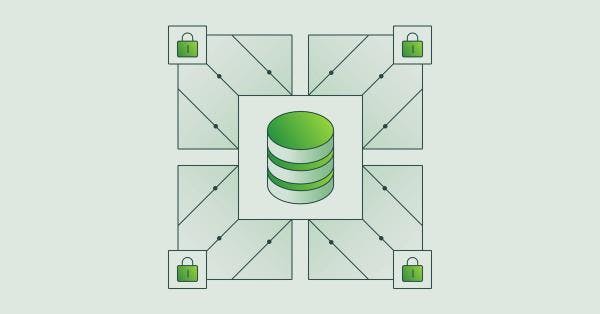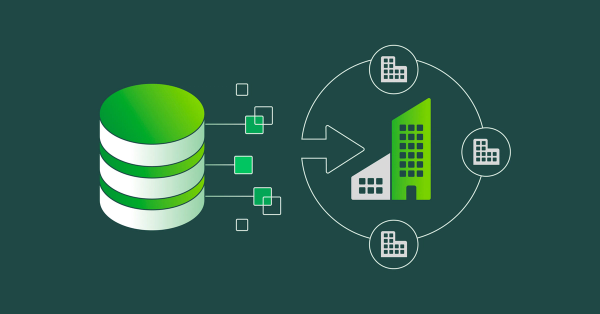The Composable CDP for first-party data in Europe
A Customer Data Platform centered on the cloud data warehouse powers superior personalization while meeting stringent compliance requirements.

Jessy Fremor

Suki Randhawa

Leonie van der Sleen
January 24, 2024
10 minutes

Over the last year, we’ve picked up on a notable shift: a growing number of European companies are turning to Hightouch for a Composable Customer Data Platform (CDP). Interestingly, this includes not only first-time adopters but also businesses transitioning from traditional CDP solutions in search of more tailored capabilities. To name one prominent example: Accor, the largest hotel chain in Europe, just announced that it selected Hightouch's Composable CDP after an extensive and highly-competitive evaluation of all major CDP options.
The evolution of marketing into a data-driven discipline has driven the adoption of cloud data warehouse-centric CDPs to achieve superior personalization. The unique regulatory environment in Europe poses both challenges and opportunities, which makes the Composable CDP an especially suitable solution for collecting, unifying, and activating customer data effectively.
We will explore the increasing demand for first-party data solutions and what distinguishes the Composable CDP from other models. We'll delve into the specifics of Europe’s unique regulatory environment for customer data, and provide a comprehensive understanding of why the Composable CDP is becoming the choice for forward-thinking businesses.
Why use a CDP: First-party data’s growing importance
Effective modern marketing and customer-centric operations rely on personalized messaging and targeted advertising campaigns. For much of the digital era, this data was easily accessed by companies as consumers were tracked, without consent, by tools like third-party cookies.
An increased focus on user privacy has already seriously eroded the targeting power of third-party cookies. The EU’s General Data Protection Regulation (GDPR) led to a proliferation of now ubiquitous “cookie consent” banners. While many sites have relied on deceptive user experiences to increase the rate of consumers giving consent, the cumulative impact across the Internet has inevitably been a decline in third-party cookie collection: according to the IAB, digital media companies had already seen a 60% decrease in targeting and audience reach by 2022. This gradual erosion is now poised to come to a conclusive end: 2024 is slated to be the official year of cookie deprecation by major providers like Google Chrome.
The future of digital advertising and marketing is customer-consented first-party data. Companies must collect, unify, and activate their own data from consumers in order to effectively personalize in the future. While marketing personalization has long relied on known identifiers, advertisers also have much to gain by making this shift:
- Ad publishing: European e-commerce retailer bol.com improved audience reach by 109% and clickthrough rate by 33% by shifting from third-party derived audiences to first-party owned audiences.
- Ad targeting: Major platforms like Google and Meta offer endpoints to sync audiences (for retargeting, suppression, and more) as well as Conversion APIs, which you can upload conversions into to improve attribution and automated targeting. This can be very impactful: a study from Deloitte and Meta found that using Conversion APIs reduced ad costs by 13% on average. Open-internet cookie alternatives such as The Trade Desk’s UID 2.0 also rely on hashed first-party data like email addresses.
With the rapid end of 3rd-party cookies, we had to act quickly. Within 4-6 weeks under a POC, we were able to completely replace all of our existing audiences with first-party data using Hightouch.
Rick Assies
Group Product Manager Advertising
•
Bol.com
Customer Data Platforms (CDPs) enable companies to collect customer data, unify it into Customer 360 records, and then use that data in marketing and advertising campaigns and tools. CDPs will grow in relevance for companies as they work to build their own first-party data strategies.
Why a Composable CDP is best suited for Europe
Traditional CDPs collect and unify customer data in their own data storage. On the other hand, the Composable CDP allows companies to use their own data storage in a cloud data warehouse, such as Snowflake, Databricks, or Google BigQuery. In other words, the Composable CDP unbundles the functions and data storage of traditional CDPs, allowing companies to define their own data schema and govern storage within their own infrastructure.

Traditional Customer Data Platform architecture

Composable Customer Data Platform architecture
The Composable CDP has many advantages over traditional CDPs, including:
- More complete data: While traditional CDPs just collect digital user and event data, the Composable CDP and data warehouse can include all relevant data for your company, unified across departments and functions, including datasets needed at large conglomerates like data on products, stores, loyalty, and more. The data warehouse is the single source of truth for finance, data, and operations teams– and it can be for marketing teams, as well.
- Faster time to value: Traditional CDPs can take up to 6 months to implement (and even longer to drive return on investment) because they require specific data transformations to match their rigid data schema. This is not a delay that most of our European customers have been willing to tolerate. The Composable CDP leverages your existing data investments and can deliver value in just days to weeks. There’s no lengthy onboarding process; Hightouch is easy to set up on top of your existing data warehouse, regardless of how you’ve structured your data.
- Lower cost: Traditional CDPs are expensive bundled packages. Hightouch allows you to purchase just the features you need to add to your existing data warehouse, and ultimately save significant expenses to fully leverage your data.
The Composable CDP outperforms traditional CDPs in all these areas– and is at parity with them for other key use cases like real-time data activation. Beyond these universal benefits of the Composable CDP architecture, there are several key reasons why the Composable CDP has increasingly become the go-to solution in Europe, notably including data residency and governance.
Data Residency and Governance
Hightouch does not store your data; instead, your data remains in your centralized data warehouse. Generally, this means that your data and security teams can govern data and access from this central source of truth without detailing with multiple storage siloes. Hightouch has many users in compliance with GDPR and other stringent frameworks such as HIPAA.
GDPR also introduced strict requirements for customer data residency: data often must be stored in the regions or countries it's used in. Different countries have continued to layer on additional requirements, so companies need a CDP solution that not only regionalizes data today but can flexibly adapt to future security requirements.
In Hightouch’s Composable CDP, users can flexibly build separate pipelines to data from their data warehouse. Companies use these features to centrally govern data access and usage based on regional requirements and the certifications of each team managing customer data.
We used to spend 80% of the time moving data over to build campaigns; that’s fallen to 20%. It means we can focus more on building engaging emails and making sure we have the data back from campaigns to analyze.
Miguel Puig
Technical Lead
•
Nando's
Consent and Customer Management
In addition to mandating customer consent for data tracking, GDPR also established a “right to be forgotten” clause, which states that companies must delete all data about a customer when that customer asks them to across all of their systems. Companies that fail to comply face a risk of severe fines and penalties.
Managing customer consent and deletion requests is a Sisyphean task when data systems are siloed and when customer data in one tool don’t directly correlate to a customer list in another. Additionally, while you must delete PII after consent withdrawal, you might want to hold on to your customer's historical anonymized behavioral data to power analytics and machine-learning models.
The first way the Composable CDP helps solve this problem is with effective identity resolution, which unifies and links distinct customer data points together. This bridges the gap between different customer touchpoints, enabling universal management for consent and deletion requests. While traditional CDPs also offer identity resolution, they themselves are working with a limited silo of customer data rather than from the central source of truth in a data warehouse, so they are incomplete solutions here at best.
The centrality of the data warehouse in the Composable CDP enables companies to update consent and delete users far more easily, as well. When a company needs to delete a customer record, for example, Hightouch can sync a customer record deletion in the data warehouse out to all of the other downstream tools that the customer was synced to in the first place. Rather than dealing with a mess of ad-hoc hunts for data deletions, Hightouch centrally manages this from a single source of truth.
We didn’t want to write our own integration code for every tool, we needed to send data. Hightouch eliminates this problem, and we don’t have to worry about constant API changes. Hightouch lets our marketing team take ownership.
Darren Haken
Head of Engineering
•
Auto Trader
Cultural and Market Variance
Europe is characterized by its diverse landscape, which includes a wide range of cultures, languages, and business practices. This diversity extends to the data ecosystem, posing unique challenges for businesses operating in the region, such as:
- Multilingual Data: Europe encompasses regions with multiple languages, requiring businesses to manage and analyze data in various languages.
- Cultural Variances: Different regions within Europe have distinct cultural preferences and behaviors, impacting how businesses collect, interpret, and utilize data.
- Varied Regulatory Environments: Europe includes countries with different data protection regulations and privacy standards. Compliance with varied regulatory environments poses a challenge for organizations in managing customer data.
- Diverse Consumer Preferences: Consumer preferences can vary across the European market, requiring organizations to gather and analyze data that reflects these diverse preferences.
- Unique Market Dynamics: Each country or region may have unique market dynamics, requiring businesses to adapt their data strategies based on specific market conditions.
Composable CDPs offer several features and capabilities that can help address these challenges:
- Flexible Data Integration: Integrate data from diverse sources, including multilingual datasets. This flexibility ensures that organizations can manage and analyze data in their different target market languages.
- Customizable Data Models: Tailor data infrastructure to account for cultural nuances and variances in consumer behavior across different markets.
- Adaptability to Regulatory Changes: With their modular and adaptable architecture, composable CDPs can quickly respond to changes in data protection regulations to ensure that organizations can maintain compliance with evolving regulatory environments.
- Personalization for Diverse Consumer Segments: Personalize marketing efforts based on diverse consumer preferences. This personalization can be tailored to different regions, allowing targeted and relevant customer communication campaigns.
- Localization and Regionalization: Support localization and regionalization strategies, allowing businesses to customize their data processes to align with unique market dynamics.
- Unified Customer View Across Regions: Composable CDPs provide a centralized and unified customer view that spans across regions. This ensures that businesses can maintain a holistic understanding of customer interactions and preferences, even in a diverse market.
Getting Started
Leveraging the data warehouse in a Composable CDP is the best way to collect, unify, and activate customer data in a privacy-conscious future. To learn more about how you can grow your company with Hightouch, reach out to our solution engineers to discuss your goals for your customer data.






